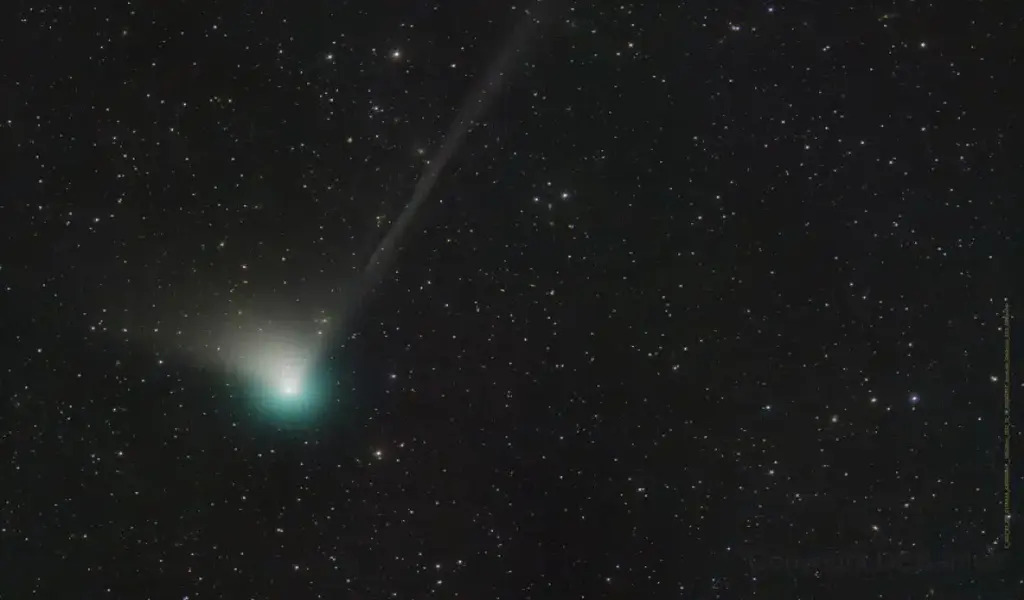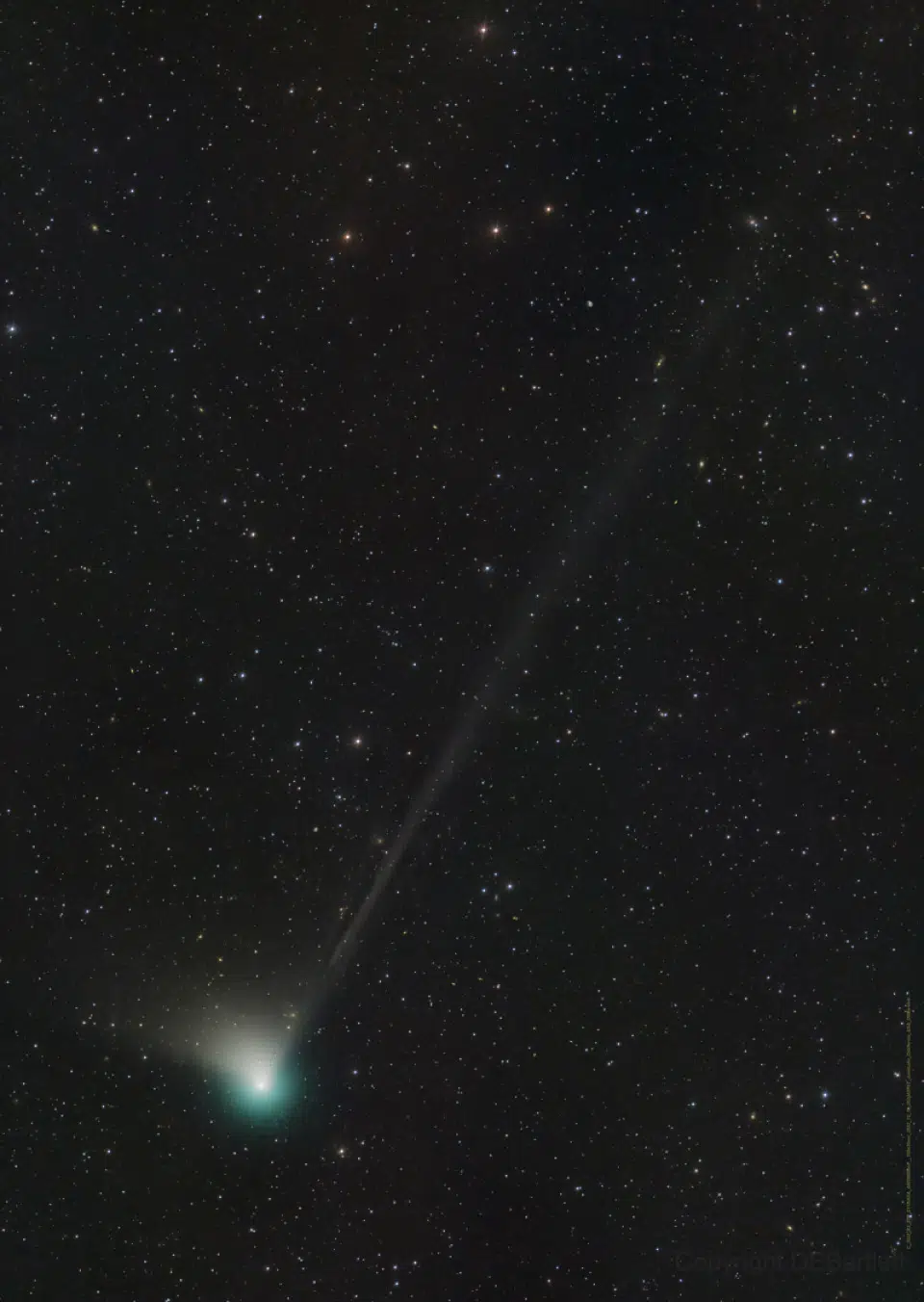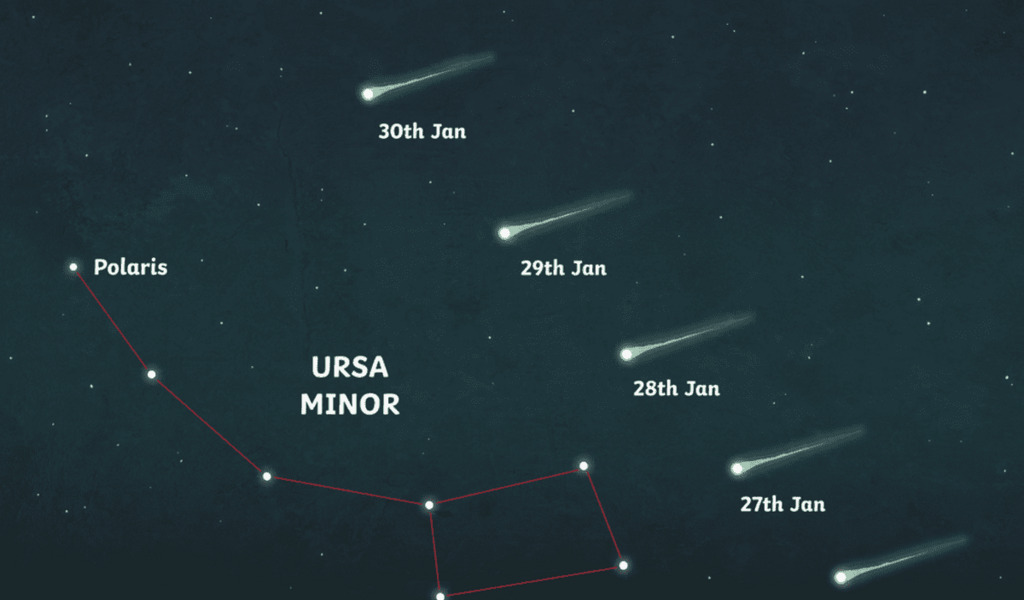(CTN NEWS) – CAPE CANAVERAL, Fla. – After 50,000 years, a comet is heading in our direction.
According to NASA, the last time the filthy snowball visited was during Neanderthal times.
On Wednesday, it pass by Earth at a distance of 26 million miles (42 million kilometers) before accelerating off again and becoming unlikely to come back for many eons.
Contrary to the title of the killer-comet movie “Don’t Peek Up,” take a lookup.
This green comet, which was only recently discovered, may already be seen in the northern night sky with binoculars, small telescopes, and possibly the naked eye in the Northern Hemisphere’s darkest regions.
Through the end of January, it is anticipated to get brighter as it approaches and rises higher over the horizon; it is best seen just before dawn. It will be close to Mars by February 10—a useful milestone.

The Southern Hemisphere will have to wait until the following month to catch a look.
Even though there have been several comets in the sky recently, NASA’s comet and asteroid tracking guru, Paul Chodas, noted that “this one seems maybe a little bit bigger and hence a little bit brighter, and it’s coming a little bit closer to the Earth’s orbit.”
In March, astronomers found this long-period comet using the Zwicky Transient Facility, a wide-field camera at Caltech’s Palomar Observatory.
Its color is green because of all the carbon in the gas cloud, or coma, around the nucleus. This explains its complicated, official name, comet C/2022 E3 (ZTF).
It will fly between Earth and Mars’ orbits on Wednesday at a relative speed of 128 500 mph (207,000 kilometers). Its tails are believed to extend millions of miles from its nucleus, which measures roughly a mile (1.6 kilometers) across (kilometers).

The comet won’t be as dazzling as Hale-Bopp and Hyakutake in the mid-to late-1990s or Neowise in 2020.
But according to University of Hawaii astronomer Karen Meech, “it will be bright by its close Earth transit… which permits scientists to undertake more research and the public to be able to watch a lovely comet.”
The last time the comet passed through the planetary neighborhood of the solar system, according to estimates made by scientists using its orbit, was 50,000 years ago.
Chodas, director of the Center for Near Earth Object Studies at NASA’s Jet Propulsion Laboratory in California, said that they don’t know how close it got to Earth or if the Neanderthals could have seen it.
It is more difficult to discern when it reappears, though.
The gravitational pull of the sun and planets modifies the comet’s route somewhat each time it passes by them, eventually causing significant course alterations. Jets of gas and dust that the comet emits as it warms up close to the sun are another unpredictable factor.

Chodas added, “We don’t know how much they are shoving this comet around.”
The comet, a time capsule from the early solar system 4.5 billion years ago, originated from the region beyond Pluto known as the Oort Cloud. It is thought that this comet sanctuary in the deep cold extends more than a fourth to the following star.
Even if comet ZTF was born in our solar system, its future there cannot be predicted, according to Chodas. He went on to say that if it is expelled from the solar system, it will never come back.
If you miss it, don’t worry.
“There are dozens of these in the comet industry, so you must wait for the next one,” Chodas added. “The following one could be bigger, brighter, or closer.”
RELATED CTN NEWS:



